LINX Nairobi, the new Internet Exchange Point for Kenya is now live! But what engineering work goes on behind the scenes when launching a new, multi-site interconnection hub? LINX Senior Network Engineer Joe Jefford explains all.
After much planning we were finally ready to start the LINX Nairobi physical installation across the three selected data centre sites in Nairobi – IXAfrica, Africa Data Centres and iColo. The actual build took place over the course of 2 weeks after having already conducted site visits to all 3 sites in the months leading up to installation.
Pre-Install
Prior to the install a lot of work went into planning and preparation of the equipment, as well as the long process of importing certain kit into the country. As anyone who has shipped equipment internationally knows this process can be hard work, but with the help of a good import partner we were able to smoothly get the equipment into Nairobi and into their warehouse storage facilities.
As equipment was being shipped in multiple shipments, from multiple countries to Kenya we decided upon sending these all to the warehouse. Splitting these per site at this stage to ship would have added additional overheads and risk of some shipments being delayed longer than others in customs.
When in country we then took inventory of all the kit, to ensure it had all arrived as expected. And then split the kit into 3, one with everything needed for each site, which were then couriered to the DC.
We worked with each data centre partner on getting the LINX racks provisioned and ready for us to install, including the structured cabling we would require for both our internal patching and member connections. We also worked alongside other technical partners to ensure the DF ring was in place, and site connectivity was in place for our arrival.
Install
The install itself was simply a case of repeating the install processes we have done many times in the past, just with some slightly heightened security checks to enter some of the data centres.
We unboxed all equipment and their relevant rail and install kits in the unboxing/staging areas, and then moved it to our racks. Being the first client into the new IXAfrica data centre had the advantage of being able to take up a lot of space without getting in anyone’s way!
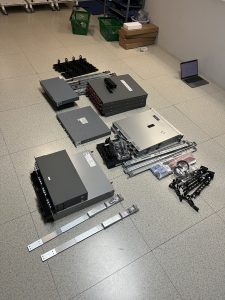
Unboxing everything in one hit allows us to manage the install doing “similar” tasks all at once. Everything unboxed, rails or ears fitted, all cage nuts installed, then all the devices racked in one hit. This approach allows the install to run a lot smoother than unboxing and racking each device individually.
The installs as a whole, went well, with all data centre partners and on-site staff very happy to get involved and help us when needed which was a massive plus. We got the bulk of the installs and cabling completed within a week, which allowed us to configure and test the equipment while still on-site in Nairobi.
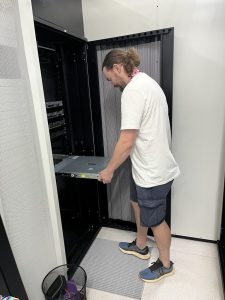
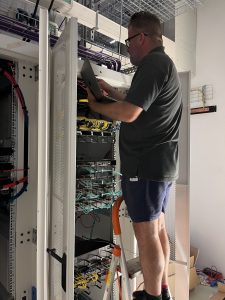
Management connectivity was brought live via VPNs back to London, our partners services on the internet feeds working first time without any issues, and we were able to bring the DFs between the sites live and test full site to site connectivity.
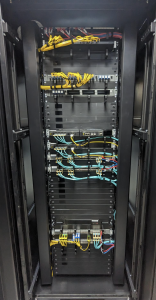
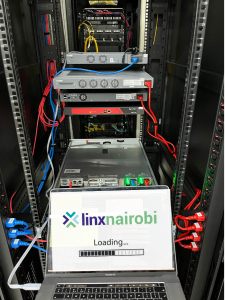
Once this was done, the team back in London could begin the processes of bringing all the equipment under configuration automation and the many check-lists involved with declaring equipment ‘ready for service’.
After some final checks, the exchange was able to go live and be ready for networks to connect into.
***
Existing LINX member networks are able to add a port at LINX Nairobi via the member portal and new to LINX members can start the application process here.
£100 a month membership fee allows 1 x 10G port at all LINX interconnection solutions hubs with a 1G peering service. Full service fees can be found here.
At LINX Nairobi, all data centre sites are providing 1 x free cross connect into the internet exchange– Find out more here.
< Go Back